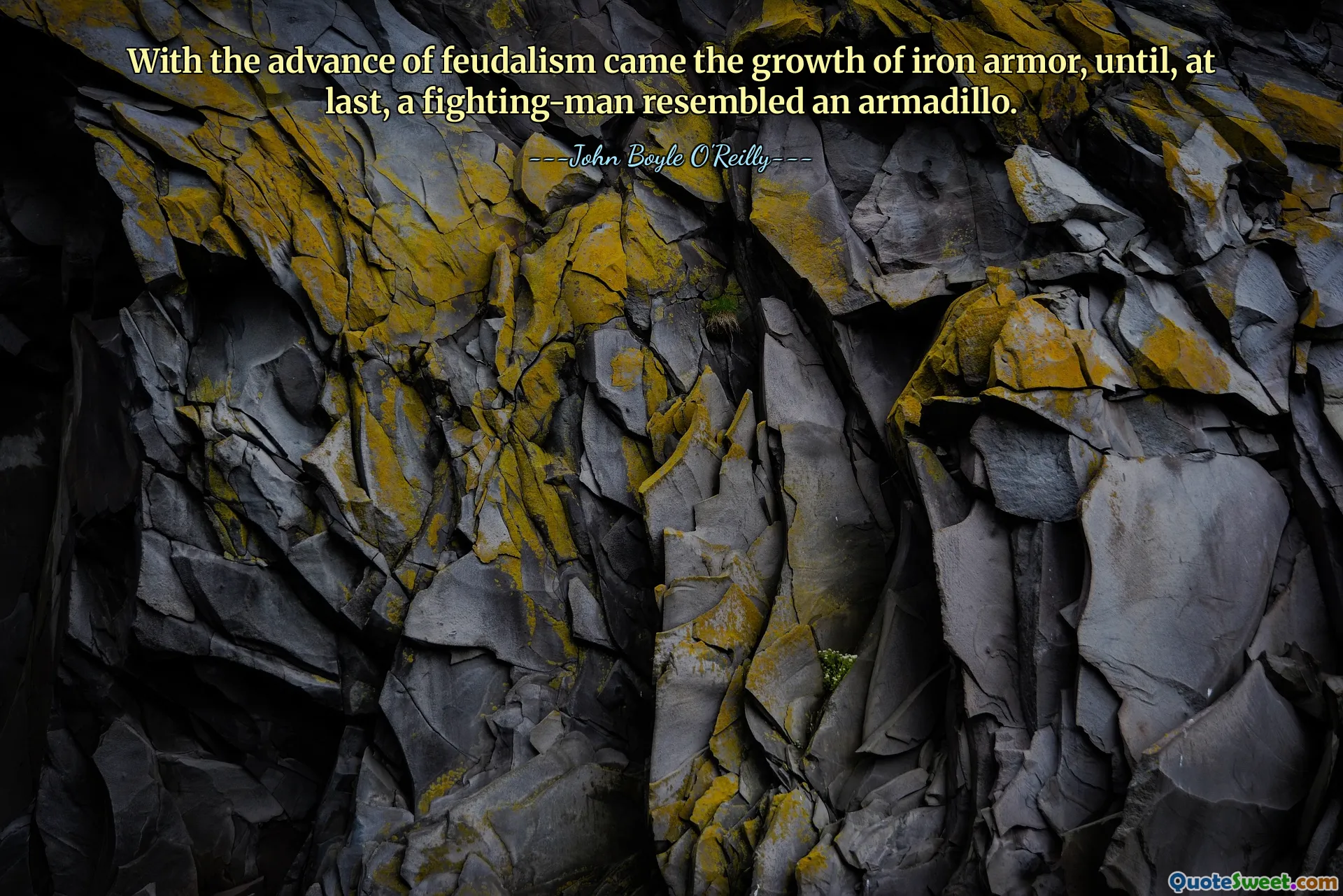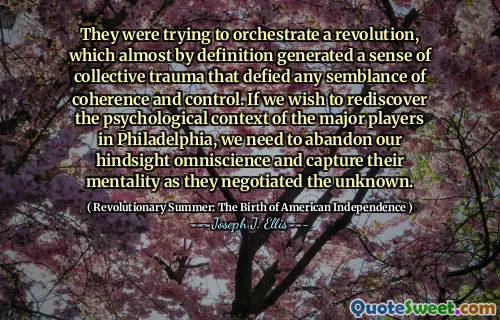
With the advance of feudalism came the growth of iron armor, until, at last, a fighting-man resembled an armadillo.
This quote vividly encapsulates how the evolution of warfare and social structures over time has led to significant changes in the equipment and possibly the mindset of fighters. The progression from simple armies to heavily armored soldiers reflects a broader historical trend where advancements in technology, particularly metallurgy and military strategy, influence the nature of combat and the individuals involved. The metaphor of a fighting-man resembling an armadillo highlights the extent to which armor became a defining feature, possibly at the expense of mobility and individuality. It prompts reflection on how societal needs and security concerns may sometimes lead to a form of militarization that emphasizes protection over agility, and how this transformation impacts personal identity and the human experience in warfare. Historically, as societies advanced, warriors transitioned from lightly armed cavalry or foot soldiers to individuals encased in increasingly elaborate armor, driven by the desire for safety amidst evolving threats. This creates a paradox: while armor was designed to protect, it also potentially alienated fighters from their own vulnerability, transforming them into faceless or specialized entities. The quote underscores the idea that these developments, rooted in social and technological change, have a profound effect on the culture of conflict, shaping not only how wars are fought but who the fighters become. It invites us to consider the balance between protection and humanity, the cost of technological progress in combat, and whether the resulting transformation serves the greater good or diminishes the human element in warfare.











